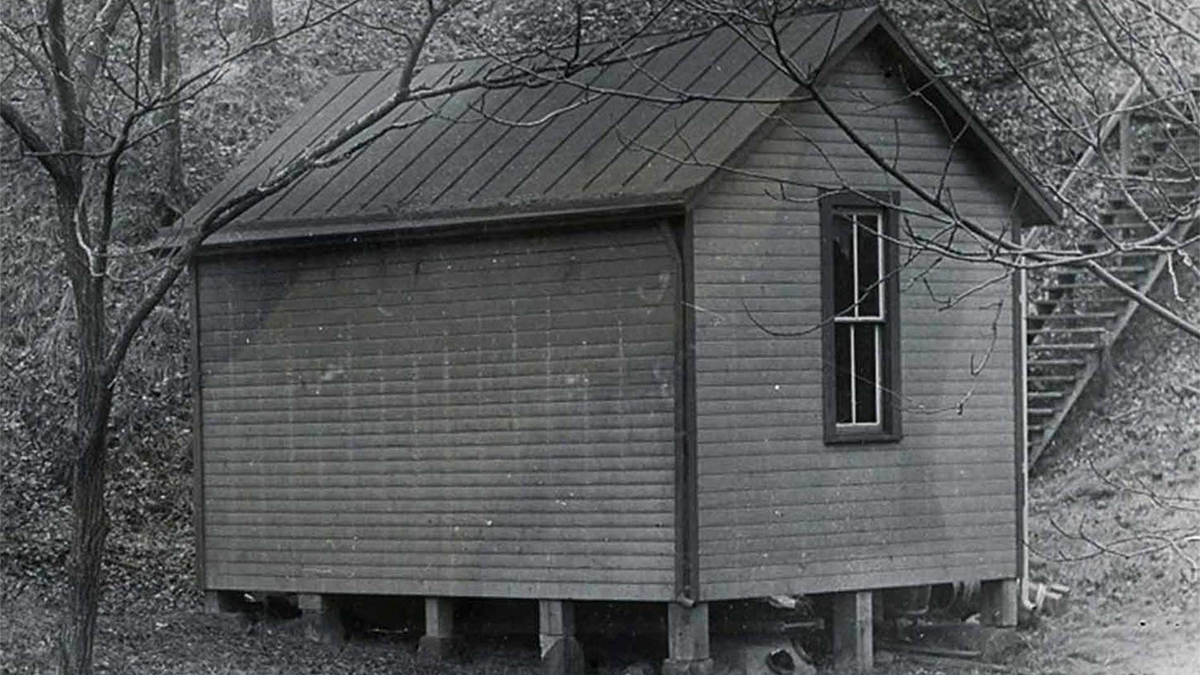School History
The story of West Virginia University's Health Sciences Center is a story of growth and change. WVU was established as a land grant university and named the Agricultural College of West Virginia in 1867. Just a year later the name was changed to West Virginia University.
Today, WVU's Health Sciences Campus is a large, modern medical complex that includes Schools of Medicine, Dentistry, Nursing, Pharmacy and Public Health, three hospitals, a physician office building, state-of-the-art cancer and eye centers and a $40 million facility that houses the Rockefeller Neurosciences Institute, named for U.S. Senator John D. Rockefeller's mother, who died of Alzheimer's disease.
The School of Medicine serves more than 2,500 students with a variety of educational programs -- including medicine, physical and occupational therapy, laboratory science (formerly medical technology), exercise physiology, continuing medical education, public health sciences and others. Faculty members provide advanced clinical care to more than 100,000 West Virginians throughout the state. The institution is making a major investment in new state-of-the-art facilities and improvements in education, research, and clinical care.
Ruby Hospital underwent an expansion of beds and operating rooms beginning in 2003, and plans for additional expansion including another more than 100 bed patient care tower and new emergency department facilities are in progress.
View former school leadership.
-
March 2024:
The West Virginia University School of Medicine Department of Obstetrics, Gynecology and Reproductive Sciences names Brian Casey, M.D., the new department chair, effective March 29, 2024.
-
January 2024:
Two new School of Medicine departments – the Department of Hematology and Oncology and the Department of Cancer Prevention and Control – are formed. Leaders say these departments will have a unique mission and focus that leaders say will set WVU apart from peer institutions. The departments will focus on cancer etiology and risk factors; treatment; community engagement and outreach; rural health; and cancer health communications, outcomes, and survivorship.
-
October 2023:
George G. Sokos, D.O., FACC, is named interim chair of the School of Medicine's new Department of Cardiology. Ramesh Daggubati, MD, FACC, FSCAI, professor and chief of Interventional Cardiology, will serve as the department's vice chair.
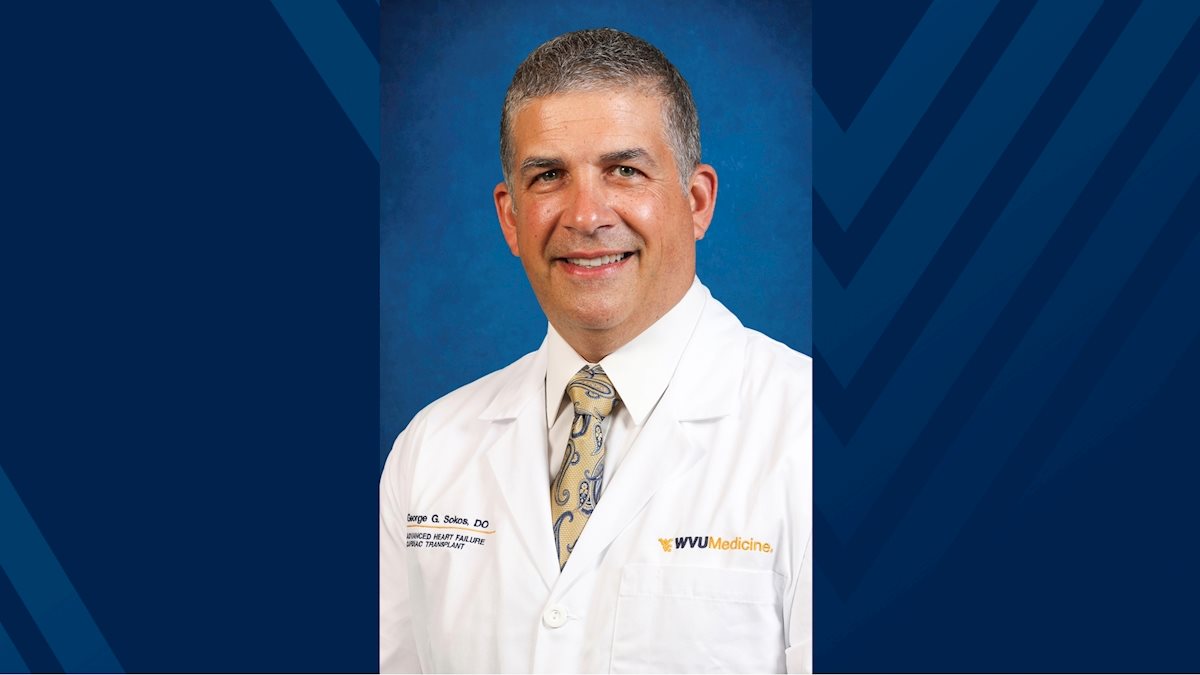
-
July 2023:
Ming Lei, a seasoned scientist with years of experience overseeing federal programs supporting research capacity building at academic and research institutions, was named senior associate vice president for Research and Graduate Education, West Virginia University Health Sciences.

-
July 2023:
Manuel Vallejo, M.D., DMD, associate dean and designated institutional official for the West Virginia University School of Medicine, vice chair for Faculty Development and Institutional Affairs, Department of Anesthesiology was elected chair of the Accreditation Council for Graduate Medical Education Anesthesiology Residency Review Committee.
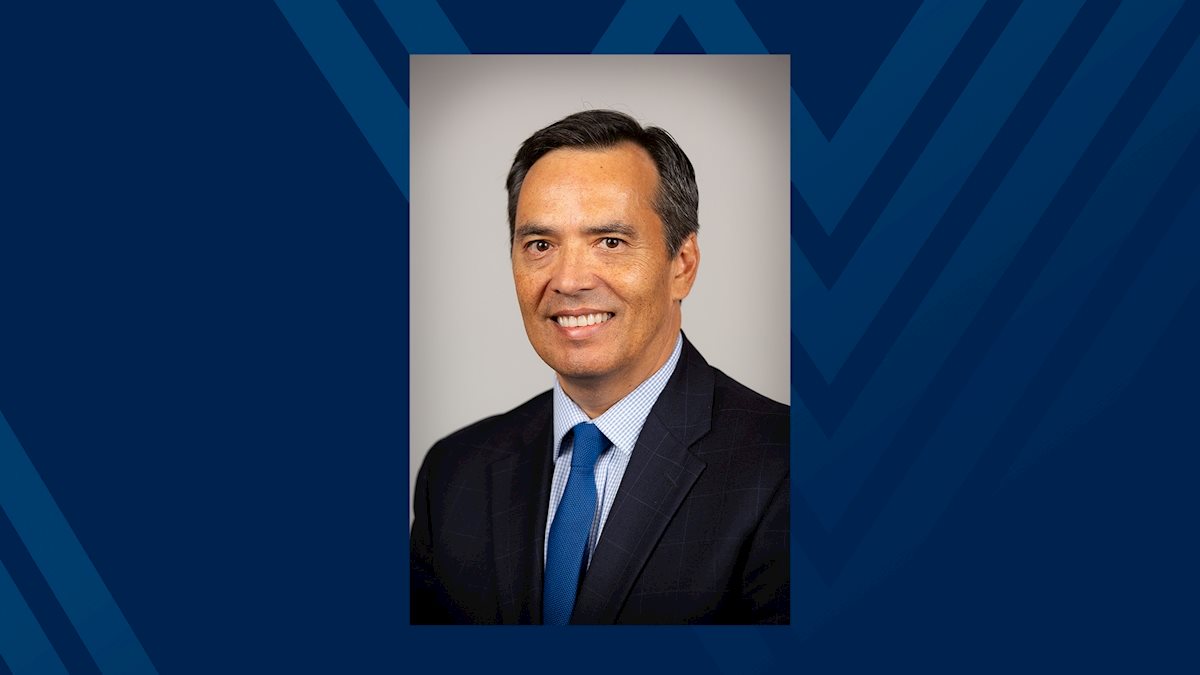
-
July 2023:
The West Virginia University School of Medicine Department of Orthopaedics has names Matthew Dietz, M.D. as the new chair.
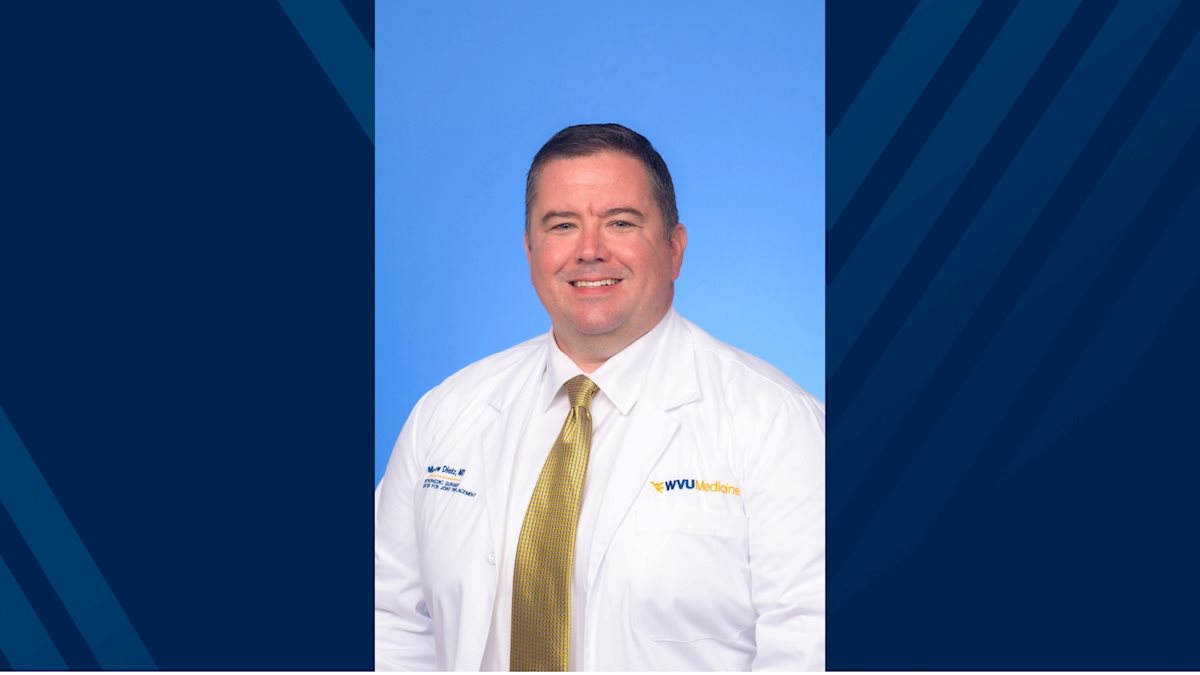
-
June 2023:
The West Virginia University School of Medicine has taken its first steps in the formation of a new department of Physical Medicine and Rehabilitation by announcing John Alm, D.O., MHA, as chair.

-
February 2023:
Respiratory therapists are in high demand, and the West Virginia University School of Medicine is planning to launch a new respiratory therapy bachelor’s degree program in an effort to not only give students career options but also support and grow critical respiratory services throughout West Virginia and beyond.

-
February 2023:
The WVU School of Medicine has named Nathan “Nate” Lerfald, M.D., as the Department of Medicine chair.

-
November 2022:
Richard “Tom” Thomas, MD, DDS, has been named associate vice president and dean of the West Virginia University School of Medicine’s Eastern Division and chief medical officer for WVU Medicine Berkeley and Jefferson Medical Centers effective January 1, 2023.
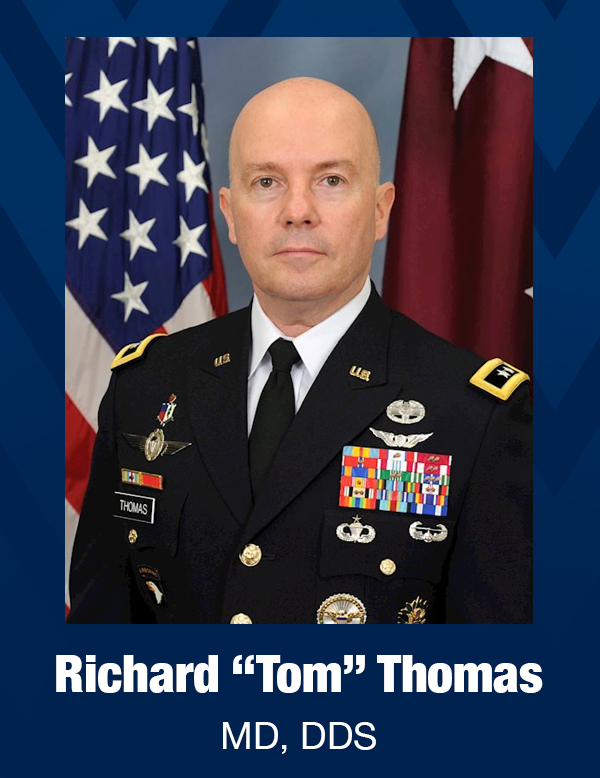
-
October 2022:
WVU celebrates the opening of the William A. Neal Museum of the Health Sciences. The Museum of the Health Sciences highlights West Virginia’s groundbreaking innovations and discoveries, chronicling breakthroughs from the frontier days in West Virginia to WVU’s modern advancements.
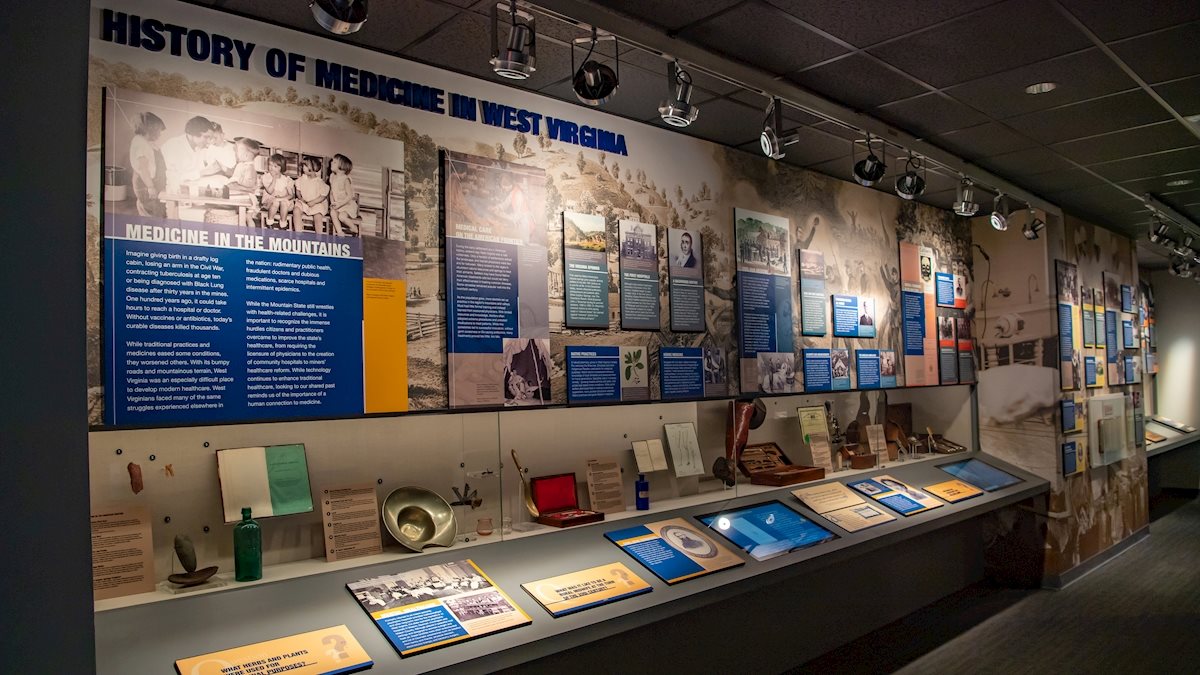
-
September 2022:
West Virginia University medical student Savannah Lusk is named a 2022 Pisacano Scholar, the American Board of Family Medicine’s preeminent program for graduating medical students.
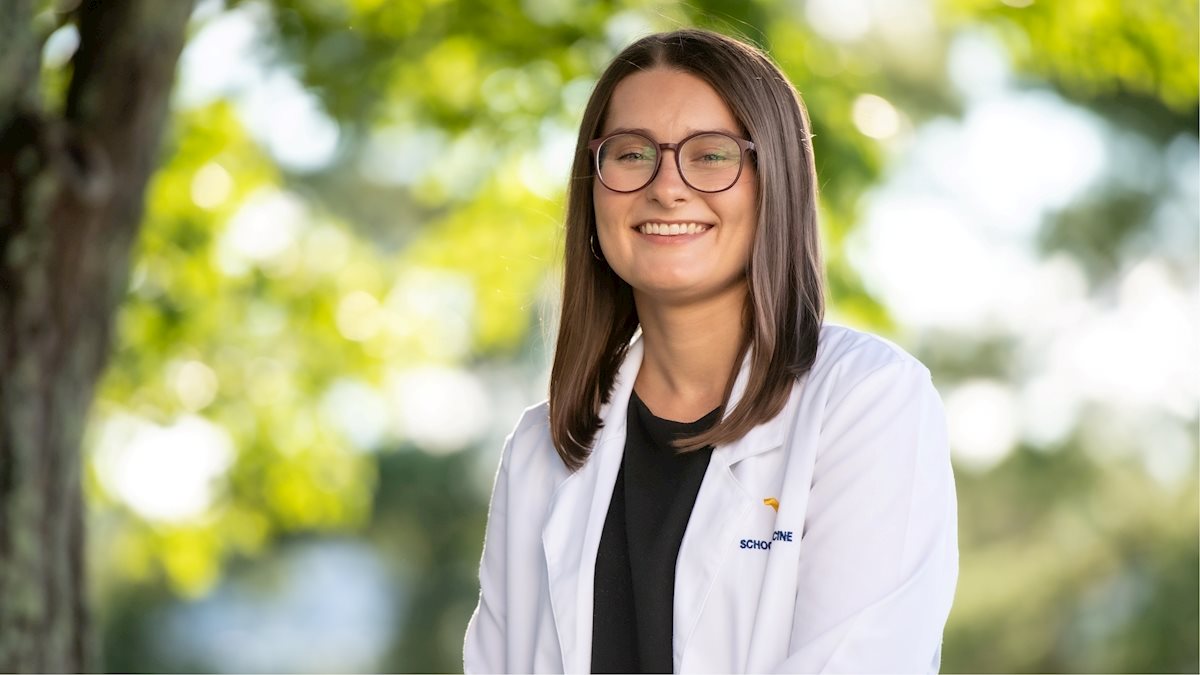
-
September 2022:
The WVU School of Medicine Department of Radiation Oncology has named David Anthony “Andy” Clump, M.D., Ph.D., as the new department chair, effective Sept. 19, 2022.

-
September 2022:
Leaders from WVU Medicine and the State of West Virginia gathered on the campus of J.W. Ruby Memorial Hospital to cut the ribbon on the new WVU Medicine Children’s Hospital.

-
August 2022:
Sally Hodder, M.D., is honored with the inaugural Chancellor’s Preeminent Scholar Chair by West Virginia University Health Sciences Chancellor and Executive Dean Clay Marsh, M.D.
-
August 2022:
Arif Sarwari, M.D., former Department of Medicine chair and current professor of infectious diseases, is named the associate dean for clinical affairs in WVU’s School of Medicine.
-
July 2022:
The West Virginia University School of Medicine Physical Therapy program names Ivan Mulligan, PT, DSc, ATC, CSCS as the new program chair.
-
July 2022:
The WVU School of Medicine Department of Radiation Oncology names David Anthony “Andy” Clump, M.D., Ph.D., as the new department chair.
-
July 2022:
Courtney Lanham is named director of diversity, equity and inclusion for Health Sciences.
-
July 2022:
Kathryn Moffett, M.D. is named assistant dean for Academic Personnel and Faculty Services.
-
June 2022:
Allison Suttle, MD, is named interim chair of the Department of Obstetrics, Gynecology and Reproductive Services.
-
June 2022:
Stephen Hoffmann, MD, is named interim chair for the Department of Medicine.
-
May 2022:
Peter Konrad, M.D., Ph.D. is named chair of WVU School of Medicine’s Department of Neurosurgery.
-
January 2022:
The WVU School of Medicine’s Department of Radiation Oncology names Parvez Shaikh, M.D. as interim chair.
-
December 2021:
Norman Ferrari, M.D. is named chief academic officer for medical education for West Virginia University’s Doctorate of Medicine program.
-
November 2021:
The Department of Family Medicine has names Carl D. Shrader, M.D., Ph.D. as the new department chair.
-
October 2021:
Dr. Kacie Kidd is named Medical Director of the Gender & Sexual Development Multidisciplinary Clinic to offer support, care to gender diverse youth.
-
August 2021:
Peter E. Konrad, M.D., Ph.D., is selected to serve as interim chair, and Robert A. Marsh, MD, PhD, as vice chair of clinical operations for the School of Medicine’s Department of Neurosurgery.
-
July 2021:
Edward Nemergut, M.D., is named Chair of Anesthesiology.
-
May 2021:
Christopher E. Mascio, M.D., is selecteded to serve as executive director of the new WVU Medicine Children’s Heart Center and division chief of Pediatric Cardiothoracic Surgery in the Department of Cardiovascular and Thoracic Surgery.
-
October 2020:
Dr. Hannah Hazard-Jenkins is named permanent director of the WVU Cancer Institute.
-
May 2020:
James Berry, D.O. is named chair of the WVU School of Medicine’s Department of Behavioral Medicine and Psychiatry.
-
February 2020:
WVU Board of Governors announces Speech Pathology and Audiology programs will move to the new School of Medicine under the new Communication Sciences Disorders.
-
February 2020:
Thomas Mauger, M.D. is named the associate chief medical officer for ambulatory care.
-
November 2019:
WVU Cancer Institute names Hannah Hazard-Jenkins, M.D., as interim director.
-
November 2019:
A man from Chesapeake, Ohio receives West Virginia's first heart transplant. Robert Parsons received his new heart at the WVU Heart and Vascular Institute. The heart transplant was the first ever in West Virginia’s 156-year history, and it marked a pivotal moment for the Institute as it continues to establish itself as one of the premier heart and vascular programs in the United States.
-
October 2019:
Department of Neuroradiology forms and names Ansaar T. Rai, M.D., M.B.A., as chair.
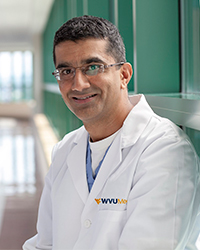
-
August 2019:
The WVU Cancer Institute demonstrates compliance with the standards of the American Society for Radiation Oncology (ASTRO) Accreditation Program for Excellence (APEx®) and becomes the first Radiation Oncology Department in the state to receive four-year accreditation.
-
May 2019:
The West Virginia University Rockefeller Neuroscience Institute (RNI) unveils its new 78,000-square-foot Innovation Center. The Center is a dedicated building featuring the latest technology for rapid applied human research. This unique facility has unparalleled capabilities in Human Performance and Recovery, Neuromodulation, Virtual Realty, Imaging, and Neuroscience Predictive Data Analytics – all under one roof.
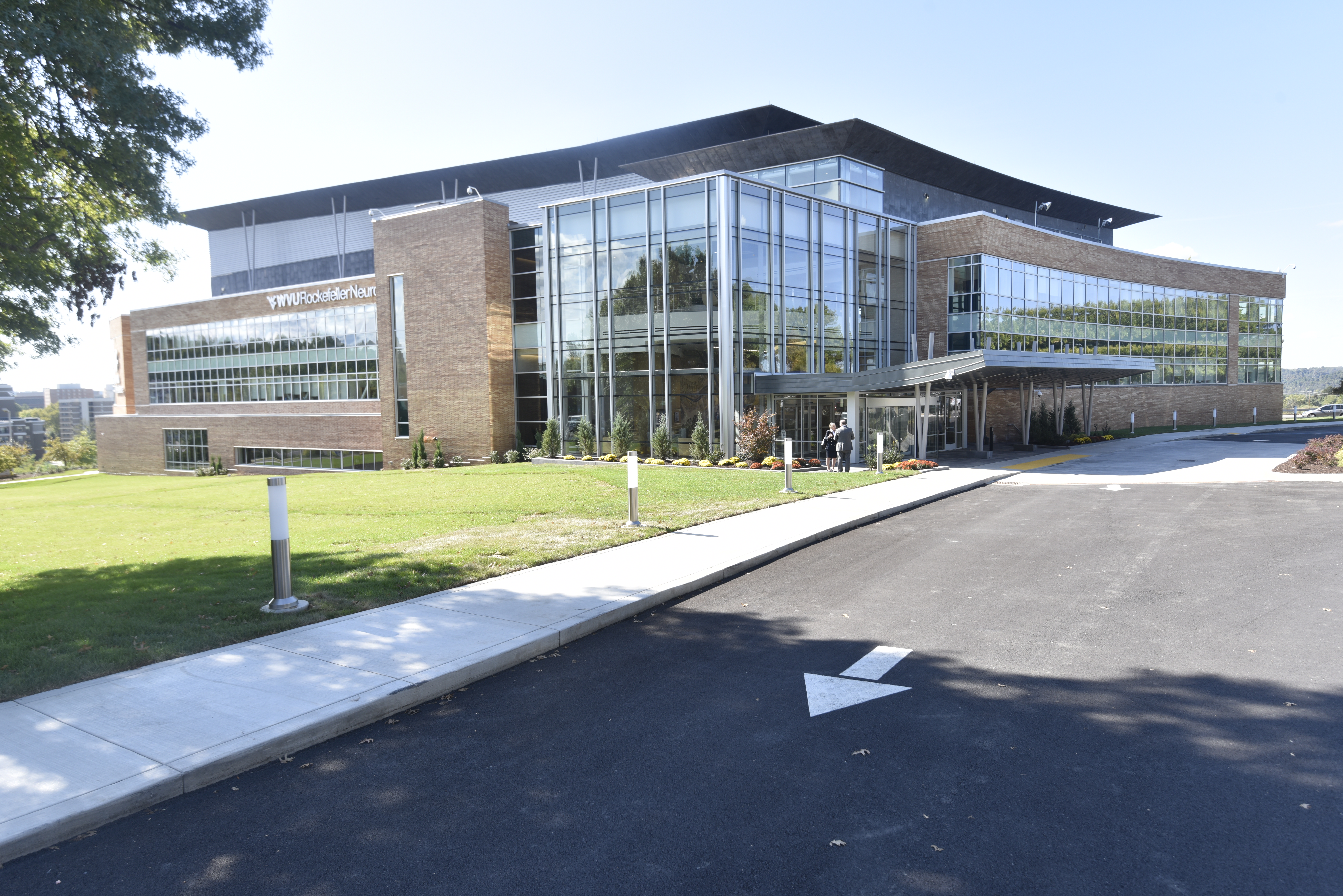
-
February 2019:
WVU Board of Governors announces Athletic Training will move to the School of Medicine.
-
October 2018:
Surgeons at the WVU Cancer Institute perform the state’s first robotic Whipple procedure on Oct. 17. The procedure treats pancreatic cancer and other tumors and disorders of the pancreas, intestine, and bile duct. WVU Medicine’s J.W. Ruby Memorial Hospital is the first in the state and one of few hospitals in the country to offer the Whipple and other pancreas procedures robotically.
-
July 2018:
In an effort to continue to improve brain health and wellness and understanding of neurological disorders, more than 50 laboratories and dozens of educators are brought together to form a new Department of Neuroscience within the School of Medicine and as a part of the recently established Rockefeller Neuroscience Institute.
-
July 2018:
Launching with the Class of 2022, the new Mountaineer Accelerated Track to Enter Residency, or MATTER program, provides a fast-track curriculum option— allowing medical students to graduate earlier and with less debt.
-
June 2018:
Patrice A. Harris, M.D., a psychiatrist from Atlanta, Ga., is elected as the president of the American Medical Association (AMA). Dr. Harris received her medical degree from the West Virginia University School of Medicine and completed a psychiatry residency

-
June 2018:
To meet growing healthcare needs locally and statewide, the School of Medicine launches a new physician assistant education program. The 26-month, full-time graduate program will lead to a master’s degree in health sciences. The program begins accepting students in January 2020 and is comprised of four semesters of classroom instruction, followed by a full year of clinical training.
-
April 2018:
Larry A. Rhodes, M.D., a pediatric cardiologist and former chair of the Department of Pediatrics, is named assistant dean for health sciences programs at the University’s Beckley Campus.
-
October 2017:
WVU opens the Inhalation Facility for research and collaborations that measure, identify and discover how the particles we breathe affect our health.
-
August 2017:
WVU established a new department, formerly the Division of Urology housed under the Department of Surgery, which aims to be the leading urologic resource in the state and surrounding region and will deliver care across the entire spectrum of urologic disease for children and adults.
-
January 2017:
Clay Marsh, M.D., WVU Health Sciences vice president and executive dean, recently announces the formation of the Department of Cardiovascular and Thoracic Surgery in the School of Medicine, effective January 1, 2017.
-
2012:
The Department of Community Medicine breaks away from the School of Medicine and becomes the 5th school in the comprehensive health sciences center with the establishment of the first School of Public Health in the state of West Virginia
-
2012:
Dean Ross establishes three new departments: Translational Research, Radiation Oncology and Medical Education
-
2011:
WVU Hospitals and University Health Associates execute a joint operating agreement for the clinical enterprise and begin operating as WVUHealthcare
-
2011:
School of Medicine celebrates 50 years of offering accredited GME programs which began in 1961 with Surgery, Anesthesia, Pediatrics and Internal Medicine
-
2010:
Chancellor Colenda names Arthur J. Ross, III, MD as the Dean of the School of Medicine
-
2009:
University President Clements appoints Christopher Colenda, MD, MPH as the first Chancellor for Health Sciences
-
2009:
STEPS Center opens as the first multidisciplinary simulation education center for students and residents training on the Morgantown campus
-
2009:
Erma Byrd Biomedical Research Building opens and Mary Babb Randolph Cancer Center expansion opens
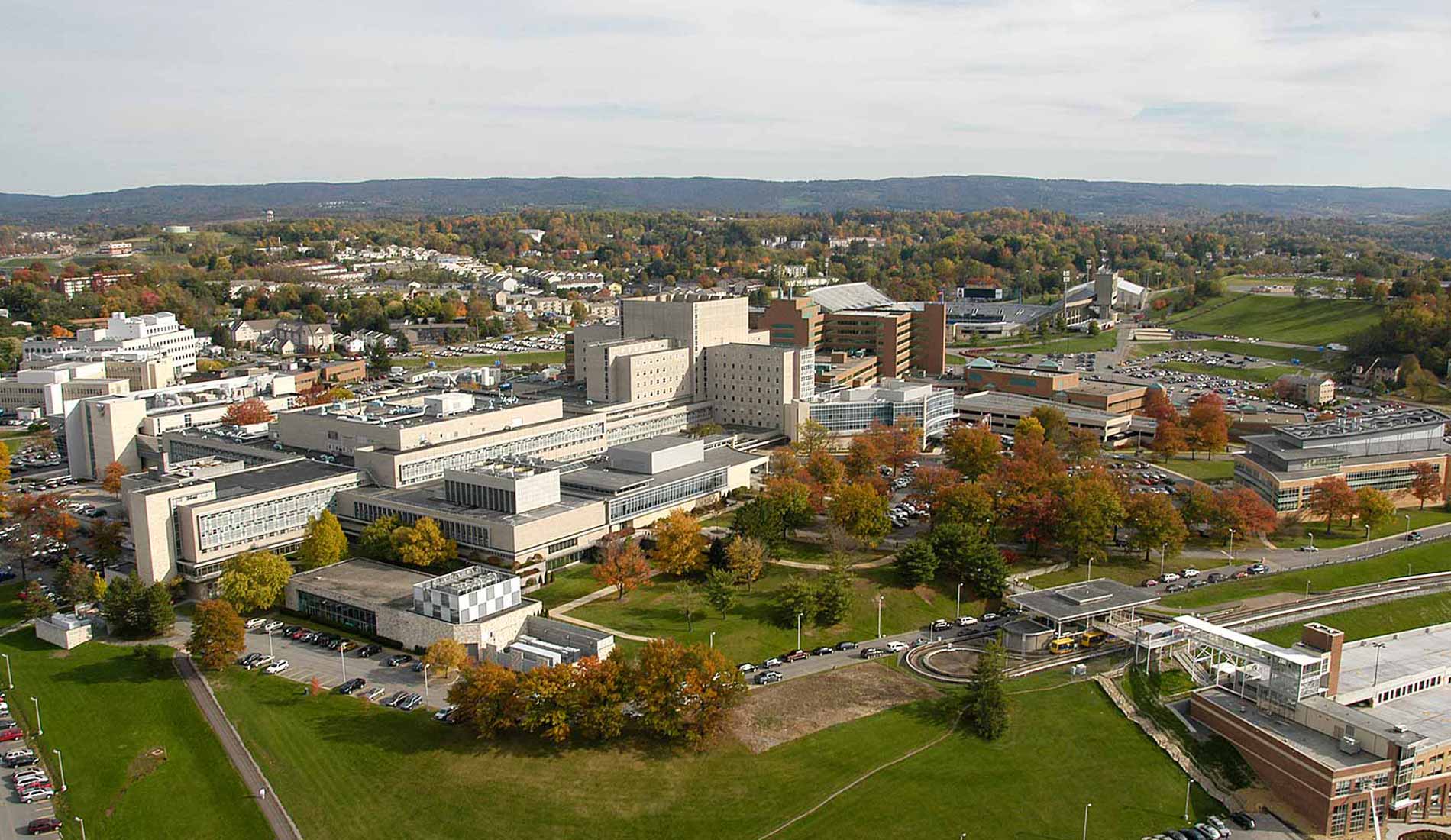
-
2007:
Learning Center opens with library renovation, new classrooms, and atrium
-
2005:
Ruby Memorial Hospital expansion opens
-
2004:
Capital campaign reaches its goal of $100 million
-
2002:
Eastern Panhandle Division established
-
2001:
WVU Physicians of Charleston (WVUPC) begins operation as separate practice plan, supporting the mission of the School of Medicine's Charleston Campus
-
2001:
WVU Eye Institute opens
-
2000:
Rockefeller Neurosciences Institute (RNI) opens
-
1999:
Clark Sleeth Family Medicine Center opens on the ground floor of the HSC
-
1999:
First Graduates in Occupational Therapy
-
1998:
First MPH degree awarded
-
1993:
Exercise Physiology transfers from College of Physical Education
-
1993:
In 1993, the name of the Health Sciences Center was changed to Robert C. Byrd Health Sciences Center at West Virginia University in honor of longstanding U.S. Senator Robert C. Byrd.
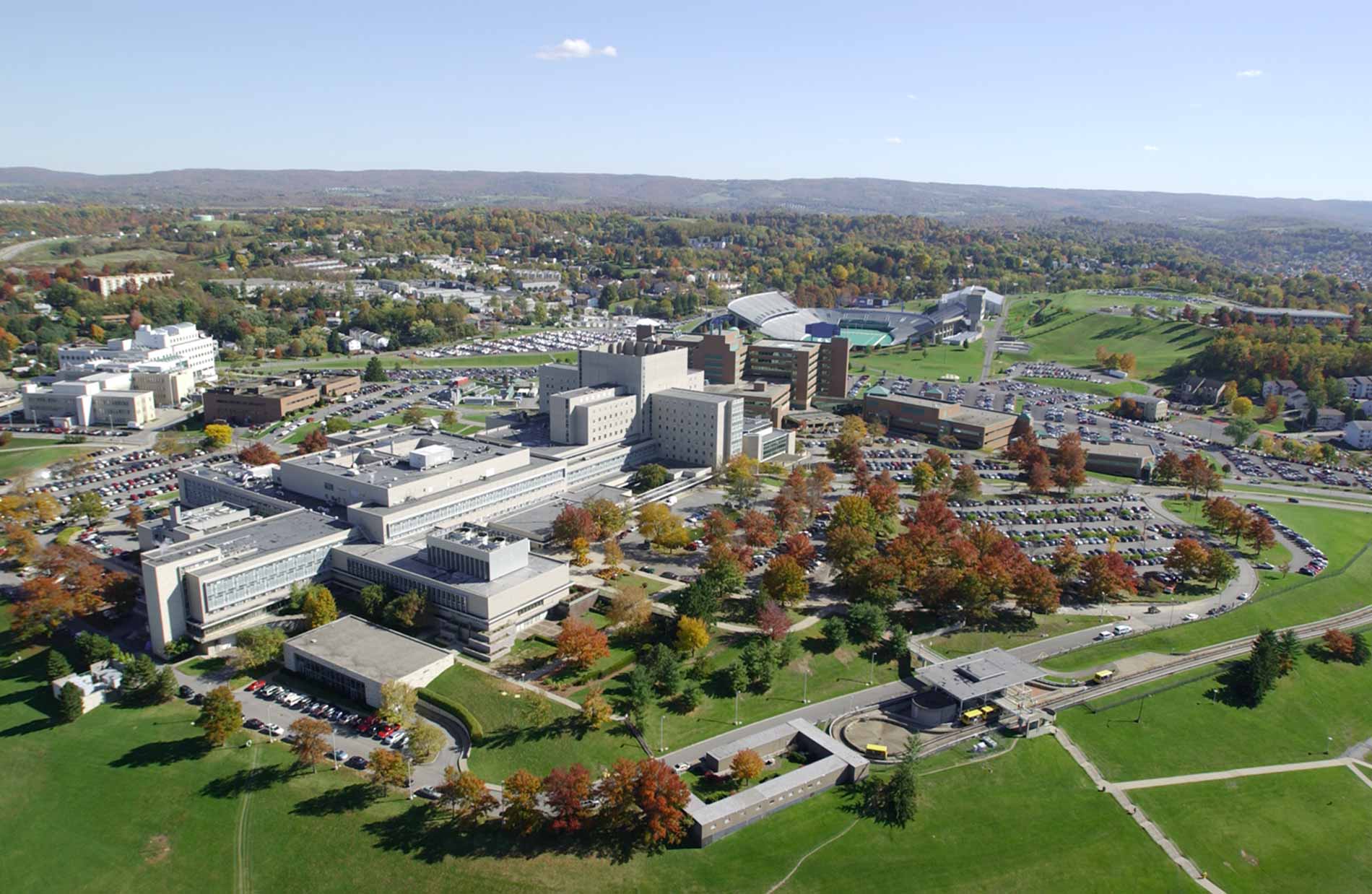
-
1990:
The Mary Babb Randolph Cancer Center (MBRCC), Physician Office Center, and Mountainview Rehabilitation Hospital opened in 1990. The Physician Office Center replaced the old ambulatory clinics.
-
1988:
UHA opens its first clinic at Cheat Lake location
-
1988:
Ruby Memorial Hospital opened in 1988, replacing University Hospital, and includes: Children's Hospital, Jon Michael Moore Trauma Center, and Chestnut Ridge Hospital, a psychiatric and chemical dependency facility, also opened in 1988.
-
1985:
UHA opens the first MRI in West Virginia
-
1972:
In 1972, the Charleston Division of the Health Sciences Center was established, the first medical school branch campus in the nation.
-
1971:
Incorporation of faculty practice plan known as University Health Associates
-
1962:
Alpha Omega Alpha (AOA) Honor Medical Society Chapter established
-
1962:
The School awarded its first Doctor of Medicine - MD degrees in 1962.
-
1961:
First Physical Therapy graduates awarded degrees
-
1960:
In 1960, University Hospital opened and the WVU School of Medicine established a four-year curriculum and the University Hospital opens for patients.
-
1957:
School moves from main campus to new Health Sciences Building with the Pylons marking the entrance to the building. The Pylons are a work of art, reflecting the history that marks the entrance to the health sciences center.
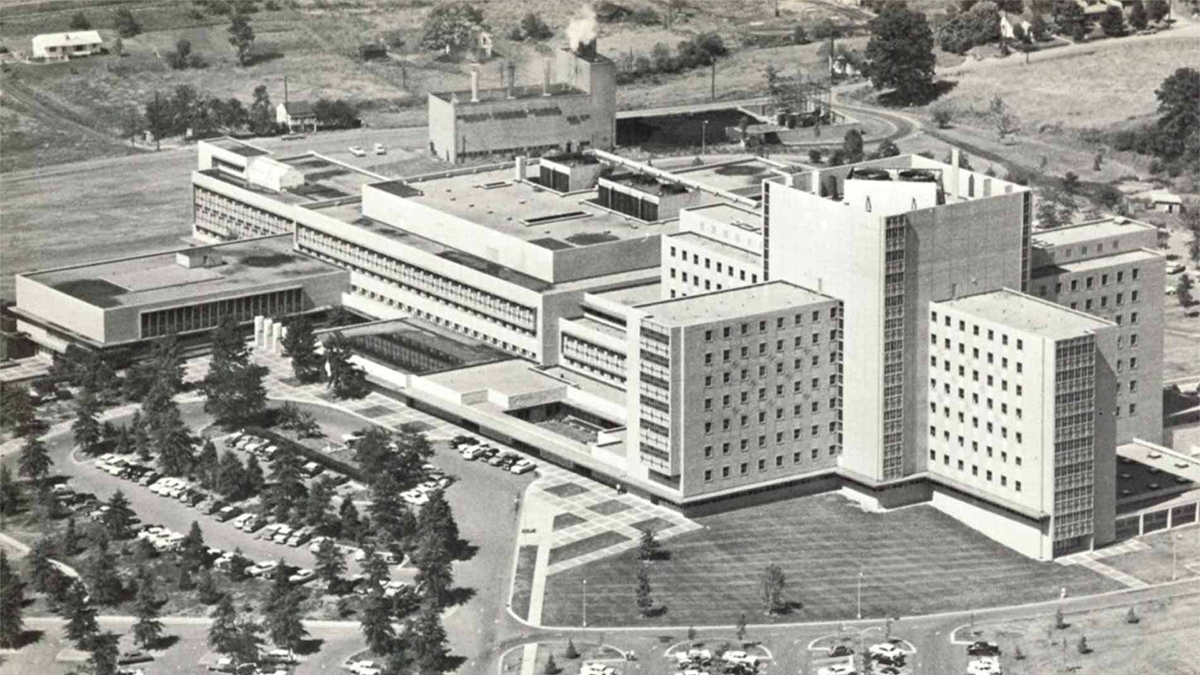
-
1951:
In 1951, the West Virginia legislature passed a tax on soft drinks, known as the "pop tax," to fund the construction of new health sciences center and University Hospital.
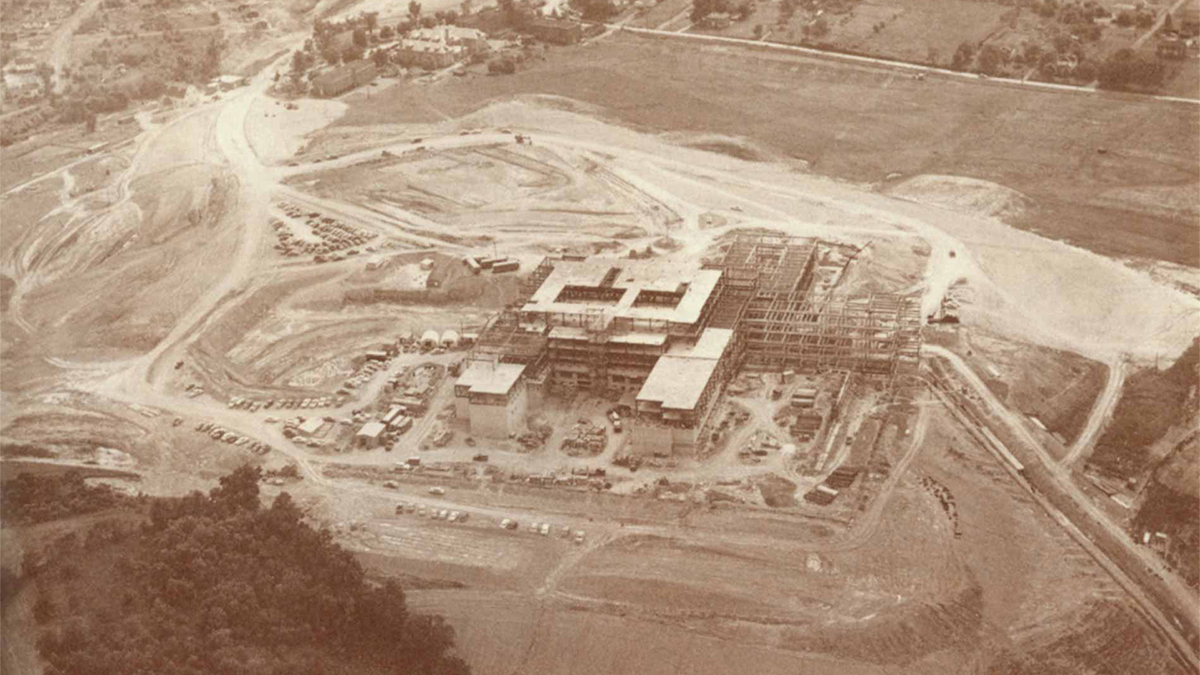
-
1945:
Medical Technology program established within the School
-
1916:
The Two-Year Medical School Building (1916-1957) featured three floors for classrooms, plus a basement for the preparation and storage of cadavers. The basement abounded with rats, and students had to carry their own cadavers up from the basement to an outside door, around the exterior of the building, then back in and up three flights to the gross anatomy labs located on the top floor.
-
1912:
John H. Simpson named first Dean
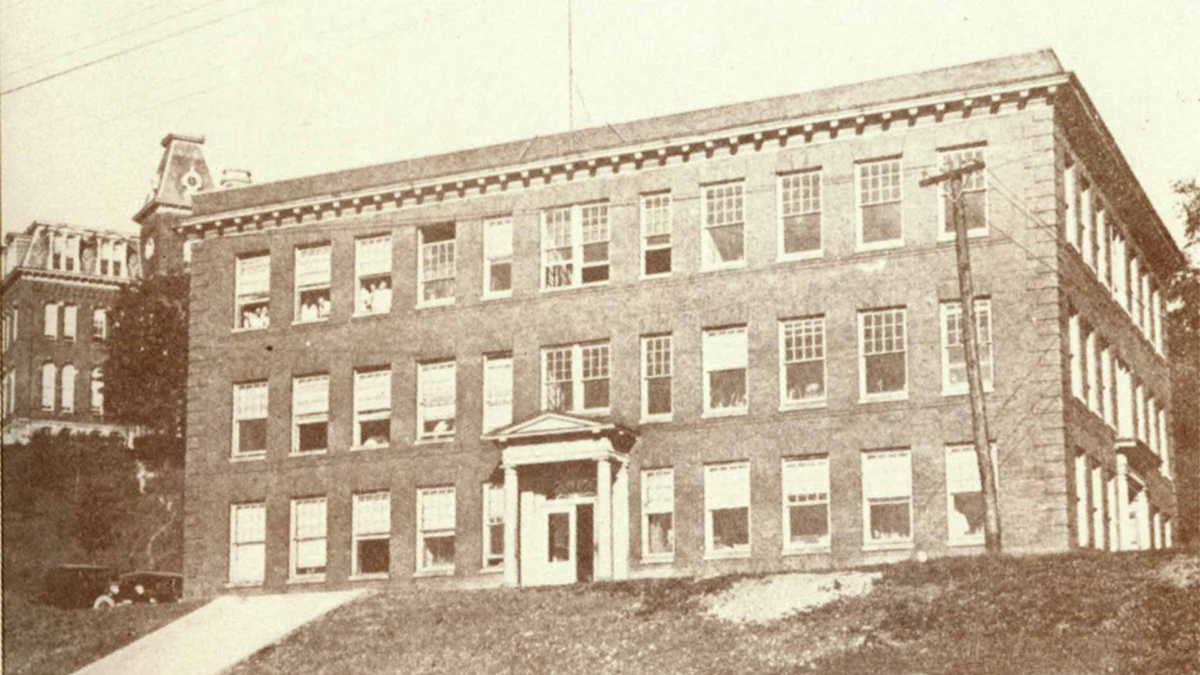
-
1912:
Independent school offering a 2 year basic science curriculum is established
-
1903:
Some medical courses were part of the curriculum in the university's earliest years, but the first comprehensive medical education program was not established until 1903. An agreement with the College of Physicians in Baltimore allowed WVU students to complete their first two years of medical education in Morgantown and their final two years in Maryland.
-
1887:
The HICK HOUSE was the first medical school building in the State of West Virginia. Constructed in 1892 in Falling Run Hollow below Woodburn Hall, it was intended to provide space for dissection of about 10 cadavers. Dr. James Hartington, appointed to the university faculty in 1887 as the first full time Professor of Anatomy, Physiology and Hygiene secured the $350 needed to construct the 14" x 20" building. It served Medical instruction for about ten years and provided material for area storytellers for many more. The origins of the name "Hick" are not known, but it probably represents a local corruption of the Latin burial phrase "Hic Jacet" (here lies…). Whether true or not, cadavers here were known as "hicks," rather than "stiffs."
